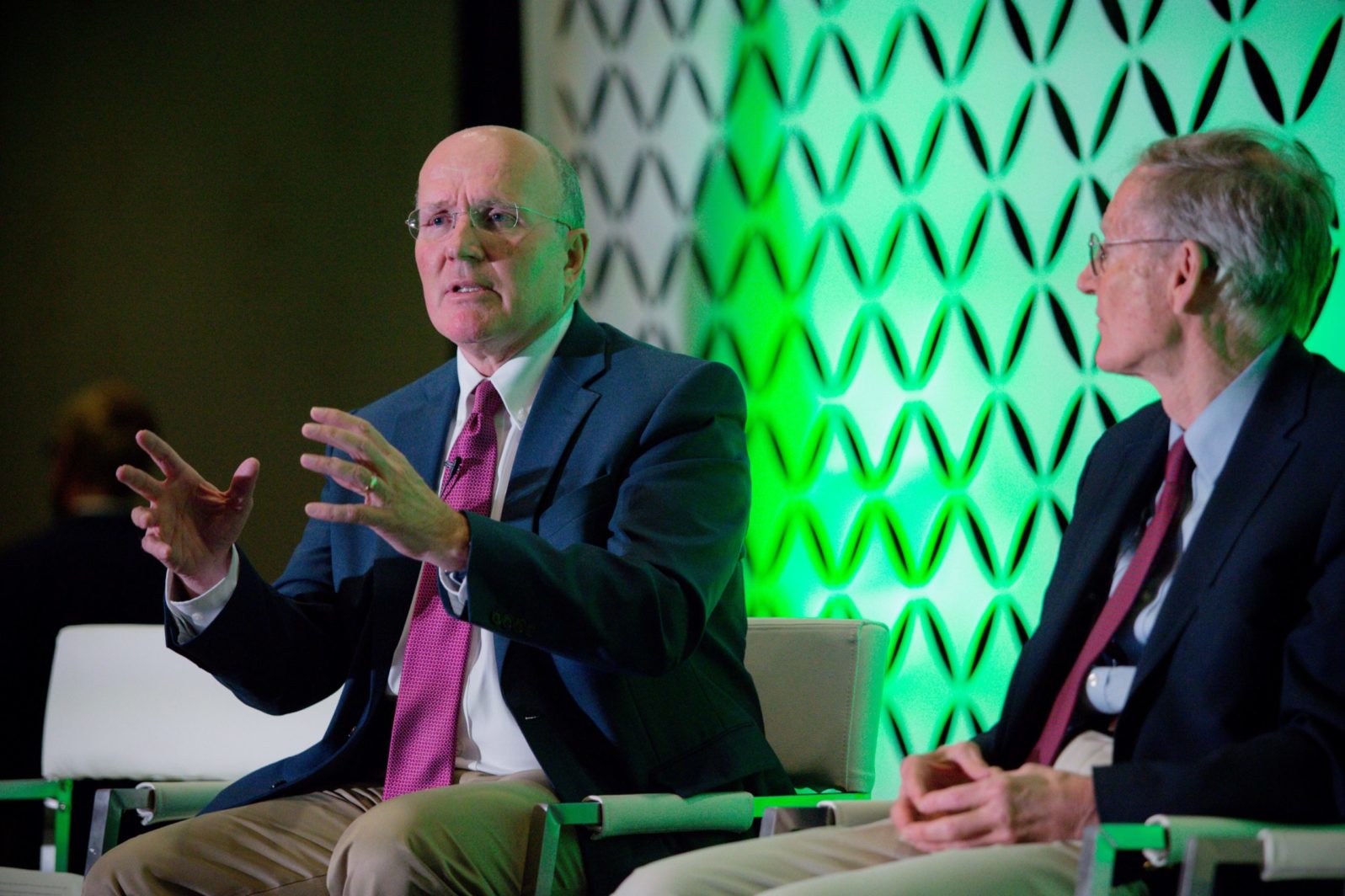Economics As If Time, Not Money, Drives the Bus
Business prof Gale Pooley told COSM 2021 that the information society has vastly increased the goods that our time will buy by increasing and automating knowledgeBrigham Young University business prof Gale Pooley figures that not only does time drive the bus but economics is much easier to understand if we take that fact seriously. That was one key point in his wide-ranging talk at COSM 2021 yesterday, “Knowledge vs. Doom.” As we all struggle with inflation, it’s worth looking at the money we earn simply from the perspective of how much of our time was spent earning it:
“Money is time” essentially means that we buy things with money but we really pay for them with our time. Instead of dollars and cents, we can use hours and minutes to price things. We can use “time prices.”

As he told the audience, Yale University economist William Nordhaus developed a time price metric which he explained by a simple illustration. In 1830, it cost three hours of work at an average wage to buy an hour of light, that is, candlelight. What did that mean in practice?:
In a diary entry of May 1743, the president of Harvard University, the Reverend Edward Holyoake, noted that his household had spent two days making 78lb (35kg) of tallow candles.
Six months later, he noted: “Candles all gone.”
And those were the summer months.
Tim Harford, “Why the falling cost of light matters” at BBC World Service (February 6, 2017)
Needless to say, through new technologies, the cost of light has dropped dramatically since then for most people in the world. Pooley, citing tech philosopher George Gilder, sees the light metric as an illustration of the fact that wealth is, essentially, knowledge put to work. Neanderthal man had all the resources we do today but did not have the knowledge to take advantage of most of them.
If wealth can be measured as the amount of time it takes to earn the necessities and wants of life (the time price), greater knowledge can greatly reduce that time price. Technically, Pooley said, time price is “the money price divided by your hourly income.” Thus, if inflation drives up costs, we must work longer hours to keep up.

So far, so simple. But time price, as a measurement, has practical advantages over other metrics for seeing the overall picture. It captures the effects of innovation, reduces the subjectivity around measurements, and creates a widely applicable standard:
The first advantage is it fully captures innovation. When we have an innovation occur… it not only lowers prices, it increases people’s incomes. So you really need to consider both income and prices to fully capture what innovation is doing to your standard of living.
The second important thing is you remove all the subjectivity and contention associated with GDP deflators, and CPI adjustments. You can go right to a time price and you avoid all of that contention, that deal with these adjustments to monetary inflation.
The third, value of a time price is you can go to anytime at any place with any product. You can go back to France in 1850 and calculate a time price for a pound of sugar. And you can compare that time price to a price today or another product.
Fourth, he noted, the advantage of using time as the fundamental measure is that it cannot be inflated (much as we’d like that): Adapting Carver Mead’s advice about technology, “Listen to the time prices and find out what they’re telling you.”

One thing they’re telling us is that, despite the current spike in grocery bills, things are better now than they were thirty years ago:
Let’s take an example of how this works for a gallon of milk today. And we’ll say it’s $4 and you’re earning $20 an hour. So it takes about 12 minutes of time to earn a gallon of milk.
If we go back to 1980, milk is only $2 a gallon but the average wage was $7 an hour. So it took you about 17 minutes to earn a gallon of milk. So the price has fallen about 29%.
The other way to think about is if you had spent 17 minutes today, earning the money to buy a gallon of milk, how much milk could you get? Well, 17 divided by 12. That’s the 1.42, you would get 1.4, two gallons. So the abundance of milk is increased by 42%.
The difference, he said, is entirely due to the growth of knowledge in the meantime, in dairying, in transportation, in preventing spoilage. He went on to say, “We can measure knowledge with time.” If that seems enigmatic, he explained,
Now the World Bank actually tracks the prices of a wide variety of commodities. We went back to 1980… and looked at 50 basic commodities from energy to food, to materials, minerals and metals. These include crude oil to bananas, lumber to wheat, copper to platinum. We found that the average time price had dropped by 75.2%. And what that means is for the time required to earn the money, to buy one unit in 1980, you would get 4.03 units today.
What’s really significant, he noted, is that the world’s population increased about 75.8 percent at the same time. Incidentally, that triggered fears of widespread famine from natural causes. A 1968 bestseller by a world famous academic warned that “The battle to feed all of humanity is over.” The author, entomologist Paul Ehrlich believed that mass famines were inevitable and that “In the 1970s and 1980s hundreds of millions of people will starve to death.”

That never happened because knowledge reduced the amount of time people needed to work in order to grow or buy food. So more knowledge means less time spent, hence lower time prices. Thus, in reality a worldwide increase in obesity developed during the subsequent years. It was taking less time to buy food so people were eating more of it.
Another example he offered was the price of movies: Blockbuster vs. Netflix
The average unskilled worker in 2011 was earning about $10.40 an hour. So it took them about 14 minutes of work to be able to earn one hour of entertainment. Well, today, Netflix is, what, $8.99 a month? And you have access to 5,000 movies. You can stream 720 hours a month, right?
You can stream every hour of the day and night. So that puts the cost at about 1.25 cents an hour.
One little-realized factor that enables these dramatic reductions in cost, he said (again citing George Gilder), is that entrepreneurial creativity is not, in itself, constrained, as is physics, by laws of thermodynamics. No extra mental energy is required to come up with a radical innovation — though time is always a factor.
As for inflation, Pooley quotes business publisher Steve Forbes: “Central banks can print money but they can’t print time.” Focusing on the amount of time it takes to earn one’s wants and needs is a simpler and more useful measure of how inflation affects us than prices and wages as such.
You may also wish to read: Business prof: Stop it! The world is not running out of stuff. A famous bet between two top thinkers settled that a long time ago. BYU Hawaii’s Gale Pooley tells us, we’re not creating more atoms but we ARE creating the ability to make these atoms smarter.
